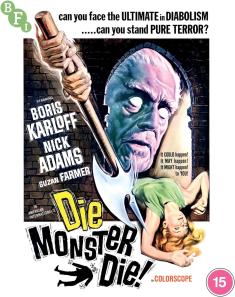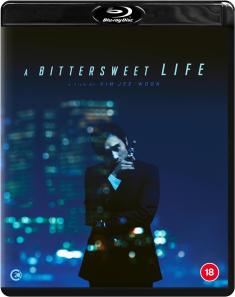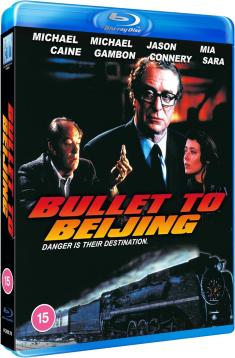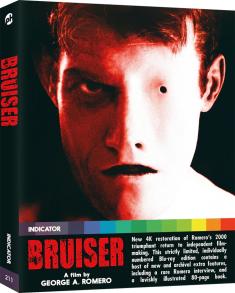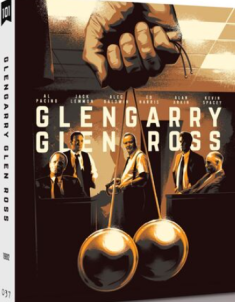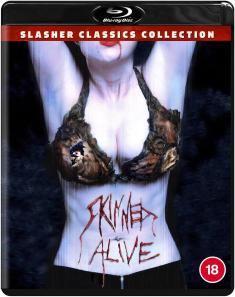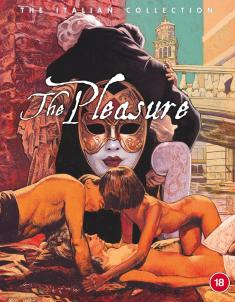KEF Q Series Speakers
Overview -NOTE: The KEF Q Series was updated and revamped in 2017 and you can read all about the new speakers in our review HERE. The short version? It's a dramatic upgrade and the 2017 Q Series are the best-sounding Q Series ever. Seriously, don't miss that newer review.
This review covers the 2011-edition KEF Q Series and some of these models are now unavailable or available only in limited quantities at places like Amazon.com or the KEF Store online.
Pros
- Clear and transparent sound
- Lush mid-range
- Great for movies, TV, or music
- Outperforms price range
- Demonstrable upgrade over previous generation
Cons
- LFE performance good but not great\
- Not quite as eye catching as previous generation
Home cinema passions are gradual. Ever evolving. One doesn't usually leap directly into top tier gear. There are budgetary hurdles and physical space limitations. Like some of you reading this, I began with home theatre in a box systems -- 5.1 satellite speaker configurations with large subwoofers.
When Blu-ray and HD-DVD launched with uncompressed and lossless multichannel surround sound capabilities, I was fortunate to upgrade to a standalone AV Receiver and a set of entry-level KEF speakers. Well, entry-level for the speaker world, where it doesn't take much effort to spend new vehicle prices.
 I had never heard KEF before, but the price was right and the demo was exquisite -- specifically, I listened to an hour's worth of music on a pair of the series flagship iQ9 towers, and immediately fell in love with the clarity of the mid and high tones while the LFE performance was so punchy it didn't always need a subwoofer (a good thing for apartment livin'). My wife, who unfortunately has suffered some partial hearing loss in one of her ears, was even more impressed, remarking how the iQs easily reproduced frequencies that were challenging for her to hear in other products.
I had never heard KEF before, but the price was right and the demo was exquisite -- specifically, I listened to an hour's worth of music on a pair of the series flagship iQ9 towers, and immediately fell in love with the clarity of the mid and high tones while the LFE performance was so punchy it didn't always need a subwoofer (a good thing for apartment livin'). My wife, who unfortunately has suffered some partial hearing loss in one of her ears, was even more impressed, remarking how the iQs easily reproduced frequencies that were challenging for her to hear in other products.
Seven years later, I find myself on a pilgrimage to demo as much Dolby Atmos gear as possible and, after spending time with the excellent R50 Dolby Atmos add-on modules as well as the powerful Ci200RR-THX in-ceiling speakers, my friends at KEF sent the latest iteration of the Q Series, which is the company's top selling speaker series.
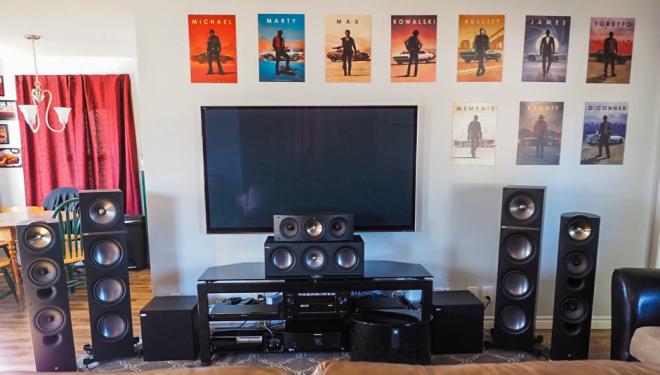
Q Specifications
The heart of any KEF speaker is its "Uni-Q" driver array, which places both the mid-range and high frequency driver unites "in one coincident assembly." From KEF's POV, because the mid-range and high frequencies originate in the same point in space, their speakers offer a more accurate and focused stereo image with no need for a conventional sweet spot. The results are, therefore, more natural and lifelike for every audience position.
Available in Black Oak, European Walnut, Rosewood, and Linear White, the current generation KEF Q Series feature a revamped and redesigned Uni-Q, with technologies trickled down from their higher-end Blade and Reference Series speakers. The tweeter is topped by the Tangerine Waveguide -- which enhances treble performance, protects the tweeter, and aids dispersion -- while the mid-range aluminum alloy cone is housed in the compact Z-flex surround for minimal interference and distortion.
We'll get into the comparing and contrasting in a moment, but testing my aging iQ Series speakers next to the new Qs demonstrates how far this speaker range has evolved in a very short time. The speakers themselves, while not quite as eye catching as the previous model, are a bit larger, much more tonally transparent and accurate, and are built with much more high-end components. For example, the speaker binding posts replaced external wiring for internal screws that allow one to single or bi-amp each speaker.
For the rest of our specifications, let's break it down, speaker by speaker:
Q900 Floorstanders ($899.99 each). The closed box flagship towers are a two and a half-way bass reflex design, with an 8" (200mm) Uni-Q driver array that includes a 1.5" (38mm) vented aluminum dome tweeter, an 8" low frequency driver, and two 8" auxiliary bass radiators (passive) with the crossover set at 1.8kHz. Frequency response is 32Hz - 40kHz (±3dB). This 8 ohm speaker has a 114dB (SPL) maximum output, 91dB sensitivity rating, weighs 48.7lbs (22.1kg), and measures 43.6" H x 14.1" W x 12.7" D (1107 x 359 x 322 mm). Each tower includes adjustable spikes to isolate the speakers and raise them up off the floor. For other alternatives, the Q700 cost $749.99 each and feature 6.5" drivers, and the Q500 cost $599.99 each for 5.25" drivers.
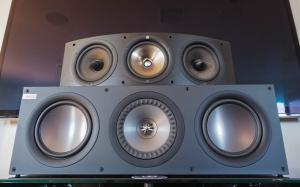 Q600C Center Channel ($649.99 each). This closed box flagship center speaker boasts a three-way bass reflex design. It includes one 6.5" (165mm) Uni-Q driver array with a 1" vented aluminum dome tweeter, a 6.5" aluminum LF driver, and a 6.5" aluminum auxiliary bass radiator. Crossovers are set at 500Hz and 2.5kHz. This 8 ohm speaker has an 87dB sensitivity rating, a 45Hz - 40kHz (±3dB) frequency response, a 110dB (SPL) maximum output, weighs 31.1lbs (14.1kg), and measures 8.3" H x 24.8" W x 11.9" D (210 x 629 x 302 mm). The Q200c center channel ($499.99) features similar components in the 5.25" size.
Q600C Center Channel ($649.99 each). This closed box flagship center speaker boasts a three-way bass reflex design. It includes one 6.5" (165mm) Uni-Q driver array with a 1" vented aluminum dome tweeter, a 6.5" aluminum LF driver, and a 6.5" aluminum auxiliary bass radiator. Crossovers are set at 500Hz and 2.5kHz. This 8 ohm speaker has an 87dB sensitivity rating, a 45Hz - 40kHz (±3dB) frequency response, a 110dB (SPL) maximum output, weighs 31.1lbs (14.1kg), and measures 8.3" H x 24.8" W x 11.9" D (210 x 629 x 302 mm). The Q200c center channel ($499.99) features similar components in the 5.25" size.
Q300 Bookshelf Speakers ($649.99 / pair). The Q300 monitor features a two-way bass reflex design, a 6.5" (165mm) aluminum Uni-Q driver array with a 1" (25mm) vented aluminum dome tweeter. It has an 87db sensitivity rating, a 110db (SPL) maximum volume, and a 42Hz - 40kHz frequency response. Crossover frequency is set at 2.5kHz. The Q300s weigh 17lbs (7.7kg) and measure 14.0" H x 8.3" W x 11.9" D (355 x 210 x 302 mm). The Q100 bookshelf ($549.99 / pair) is based around a 5.25" Uni-Q driver array.
Q400B Subwoofers ($699.99 each). The Q400B is a cube-shaped, closed-box subwoofer with a 10" (250mm) front-firing drive unit and a 200W built-in Class D amplifier. It boasts a 28Hz - 140Hz (±3dB) frequency response and has a 110dB (SPL) maximum volume. It weighs 29.9lbs (13.6kg) and measures 13.2" H x 13.0" W x 13.0" D (335 x 330 x 330 mm) when sitting on its four rubber feat.

Installation
After the sheer size of Klipsch's Reference Series, it was refreshing to set up a system that is, in many ways, equally powerful, but saved a heck of a lot more space. Since I already had four Ci200RR-THX in-ceiling speakers to handle Dolby Atmos height object duties, installing the new Qs was pretty much plug and play save for three things -- sub volume, break-in, and toe-in.
Visually, I have to say the new Qs are a lot more restrained than my iQs, which featured an eye-catching aluminum Uni-Q driver array. If you're like me and you like to forgo grilles and show off your speakers, then the Qs don't quite pop like they did before.
 Speaker connection is easy, thanks to an extremely clean rear panel (pictured left). Those aforementioned biamp screws are between the LF and HF binding posts are a vast improvment over previous iterations, which required a bulky jump cable. One note about banana plugs, something I missed during my initial review period: KEF Q Series binding posts are capped with red and black plastic plugs to ensure no air escapes the closed box design, and that no particles enter the speaker cabinet during shipping. To connect banana plugs, unscrew (remove) the binding post and pop out the red and black plastic plugs. Then you're good to go.
Speaker connection is easy, thanks to an extremely clean rear panel (pictured left). Those aforementioned biamp screws are between the LF and HF binding posts are a vast improvment over previous iterations, which required a bulky jump cable. One note about banana plugs, something I missed during my initial review period: KEF Q Series binding posts are capped with red and black plastic plugs to ensure no air escapes the closed box design, and that no particles enter the speaker cabinet during shipping. To connect banana plugs, unscrew (remove) the binding post and pop out the red and black plastic plugs. Then you're good to go.
After arranging the speakers and plugging them all in, I ran MultEQ XT32 on a loaner Denon X6200W AV Receiver, which has a dual-sub leveling feature. To tune the subs right, I had to crank the volume up into the 75-80% range, which is louder than I normally have to set sub volumes. Next it was time to let the speakers settle in for about 50 hours of casual listening break-in. My previous KEFs were floor models, so I wasn't used to this, but the Qs are a little flat out of the box. However, once they've had time to unwind (and the more hours you put on them), the better they sound.
The last bit of tweaking I played with was toe-in on the Q900s. In past apartments, I've had the luxury of placing my towers as much as fourteen feet apart, which to my ears, creates a luxuriously wide sound stage. In my current set up, I've only got nine or ten feet to play with before I start blocking places where people might want to walk. In this new setting, I've found that towers need a much more dramatic toe-in for clean stereo imaging and, of course, that wide soundstage for film and TV watching. The Q900s really came alive when pointing them directly at the sweet spot.

Q vs iQ: Uni-Q Evolved
After break-in and experimenting with toe-in, it was finally time for a series of cinema/TV and music demos. I was also in the unique position to have the previous generation iQ Series on hand to do A-to-B comparisons, which were a revelation.
My personal iQs, now eight years old, excel at higher frequencies like some classical orchestrations or even the new Sam Smith theme song for 'Spectre'. Drop in bands like Muse, Thirty Seconds to Mars, Nirvana, Black Sabbath, or Angeles & Airwaves, and it's very clear the high notes are bright at the costs of fidelity in the mid-range frequencies. If you like rock n' roll, hip hop, film scores, or even oldies, the newer Q Series -- either in stereo using the Q900s or Dolby Surround "Music" mode with everything running -- reproduced the finessed details in recordings along a much larger spectrum. The word that comes to mind, repeatedly, is transparency. It's clear the Q series isn't some minor, visual upgrade over the iQs, but a complete reinvention which has made this speaker line a better value-for-performance than ever before.
Next, let's talk movies and television. The KEFs spent the bulk of their time in a 7.2.4 Dolby Atmos configuration -- with the Denon X6200W both decoding native Dolby Atmos mixes as well as upmixing stereo, 5.1, and 7.1 content using Dolby Surround. As I've said many, many times now, once you go Atmos, there's no going back. Everything from classic catalog Blu-ray titles like 'Die Hard' (5.1 DTS-HD MA) to current generation TV broadcasts ('American Horror Story: Hotel' offers a ripping 5.1 Dolby Digital sound mix each week), to watching live sports is improved by the sensation of overhead immersion, which builds a sonic hemisphere rather than a circle.
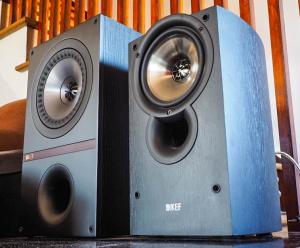 During this review period, I watched numerous Dolby Atmos Blu-rays, including 'Leon: The Professional', 'The Man from U.N.C.L.E.', and 'Mission: Impossible Rogue Nation'. Interestingly, each one offers engaging sound mixes while forgoing overtly aggressive height-speaker object placement. At the same time, all of these films provide perfect demo material to test dynamic range, dialogue replication, and performance under pressure (i.e., loud volumes). The KEFs performed well in all conditions, no matter the material.
During this review period, I watched numerous Dolby Atmos Blu-rays, including 'Leon: The Professional', 'The Man from U.N.C.L.E.', and 'Mission: Impossible Rogue Nation'. Interestingly, each one offers engaging sound mixes while forgoing overtly aggressive height-speaker object placement. At the same time, all of these films provide perfect demo material to test dynamic range, dialogue replication, and performance under pressure (i.e., loud volumes). The KEFs performed well in all conditions, no matter the material.
My last demo was an unexpected one. Dolby sent me a copy of 'Roger Waters The Wall' on Blu-ray. I've never been much of a Pink Floyd fan, so I wasn't aware that Waters' father died in World War II while Waters was a baby, which is especially tragic when one considers Waters' father lost his own father to World War I while he too was a wee boy. This concert film intercuts Waters' personal journey -- driving to the cemeteries and battlefields where his family's blood was spilled -- with one of the most incredible concert stage shows in the history of arena tours (I'm a little late to the party on this one, I know). And then there's the Atmos sound mix, which is simply sublime in the way the live music, audience noise, and sound effects like dive bombing fighter planes envelope the listener. It's an excellent Dolby Atmos mix, and the KEF Q Series brought the whole, emotional experience to life.
Overall, I'm excited to say the Q Series performed admirably, providing all of the fidelity, nuance, and sense of immersion you could want from a 7.2 or Dolby Atmos system. The only place where it feels lacking is in the LFE department. While I would put the Q900s up against speakers that cost much more than they do, the Q400B is less impressive than my PSW2500 (the KEF iQ Series sub back in 2008). Tried as I might, I never found a satisfying level and grunt and roar without running into booming. The system is excellent all around, but only a B+ in the bass department (for my tastes and listening environment, at least).
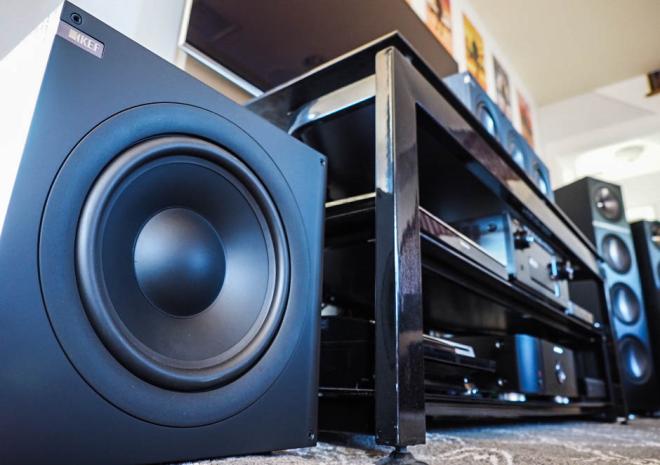
Speaker By Speaker Breakdown
Now that we know how the system works together, let's take a look at each component independently.
Q900 Floorstanders. These towers are fantastic from top to bottom. They're not exactly cheap, but upgrading to the 8" (200mm) drivers is a must-have. While they don't produce earth-shattering bass, the Q900s are the definition of transparent. Streaming music of varying qualities reveals nuances and details in every recording -- especially with bands like Nirvana, Muse, and Thirty Seconds to Mars, you're going to hear every lick of distorted guitar, thrumming bass, and pounding drums. With movies and television shows, the Q900s produced an evocatively wide soundstage; my one bit of advice is to err on the side of aggressive toe-in. As discussed above, higher frequencies are less bright than the iQs, but after careful back and forth, this turns out to be a (very) good thing. What you hear with the Q900s is what you put into them. It's hard to believe these costs less than $1,000 per speaker.
Q600C Center Channel. I was initially taken aback by the Q600C's height (it didn't fit between any of my TV stands shelves), but after rearranging a few components, I found this channel to produce very accurate dialog, vocals, and other center channel requirements. With the same size drivers as all the surrounds, it's the perfect match for this system. Some (undersized) center channels create a hollow feeling between the two large front channels, and while this is definitely not the widest-sounding center I've tested this year, it keeps up with its much larger brothers and can take a lot of volume.
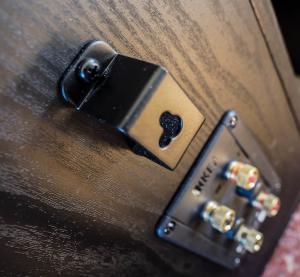 Q300 Bookshelf Speakers. These bookshelves are so good they could take on the task of becoming front channels for those without room for floorstanders. From a design standpoint, I loved how these come with a built-in bracket for wall mounting (even if I did not need). Sonically, while they can't compete directly with the Q900s (sorry), they are superb surround sound speakers. With the 6.5" Uni-Q array and the bass ports, I was able to set very low crossover frequencies (around 50Hz, I believe), which produces a much more lifelike surround experience. Theatrically, Dolby Atmos bests other surround systems by adding more subwoofers and full range surrounds; with the Q300s, you are doing something similar for your living room.
Q300 Bookshelf Speakers. These bookshelves are so good they could take on the task of becoming front channels for those without room for floorstanders. From a design standpoint, I loved how these come with a built-in bracket for wall mounting (even if I did not need). Sonically, while they can't compete directly with the Q900s (sorry), they are superb surround sound speakers. With the 6.5" Uni-Q array and the bass ports, I was able to set very low crossover frequencies (around 50Hz, I believe), which produces a much more lifelike surround experience. Theatrically, Dolby Atmos bests other surround systems by adding more subwoofers and full range surrounds; with the Q300s, you are doing something similar for your living room.
Q400B Subwoofers. My one complaint with this system... The context for this feeling is coming off a pair of 15" Klipsch subs that were, in all honesty, way too big for my listening environment, yet delivered literal room rattling LFE performance as quiet or loud as needed. In comparison, these 10-inchers are much more subdued (obviously). To give them a fair shake, I tried various combinations of MultEQ XT32, manual calibrations, in-sub bass volume level adjustments, and so on, and I simply couldn't get these to roar the way I would hope. Even compared to my aging 250W PSW2500, they just don't have the grunt to which I've now become accustomed. Perhaps its a power issue? Perhaps others have had better results in different listening environments (mine is far from perfect)? Either way, I would personally look at the R400B or another brand for a sub to go with this system. It's a good sub; just not a great one. Make sense? Cool.
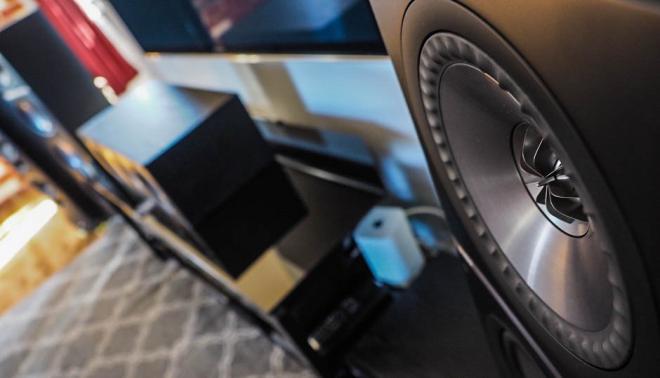
Final Thoughts
There's no other way to say it: KEF makes high quality speakers that perform as well as much higher-end gear. And they do it for many different budge levels. It's easy to see why this combination of affordable pricing and performance makes the Q Series KEF's best selling speaker line. Particularly when compared to previous generation iQ speakers, the Q Series has taken a giant step forwards in transparency and clarity. While I might elect for a more powerful subwoofer than the Q400B, I have no other significant complaints. Whether you are considering KEF for the first time or need to replace previous generation KEF speakers, the entire Q Series is Highly Recommended for surround sound and music lovers.
For those interested in purchasing the KEF Q Series, please feel free to click on the bolded speaker model numbers listed above, or visit your local, authorized KEF dealer. Cheers.





